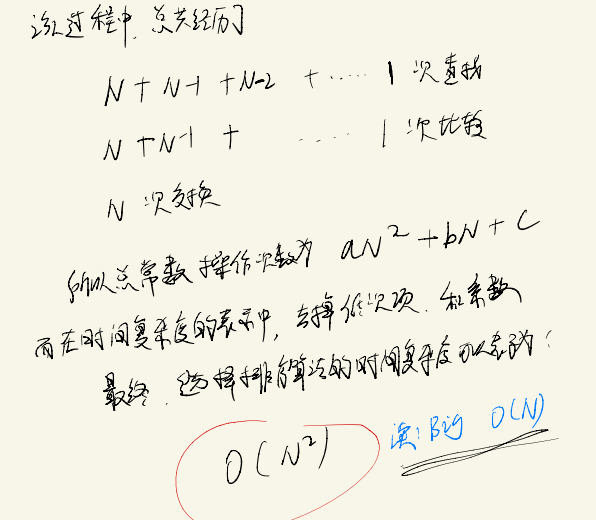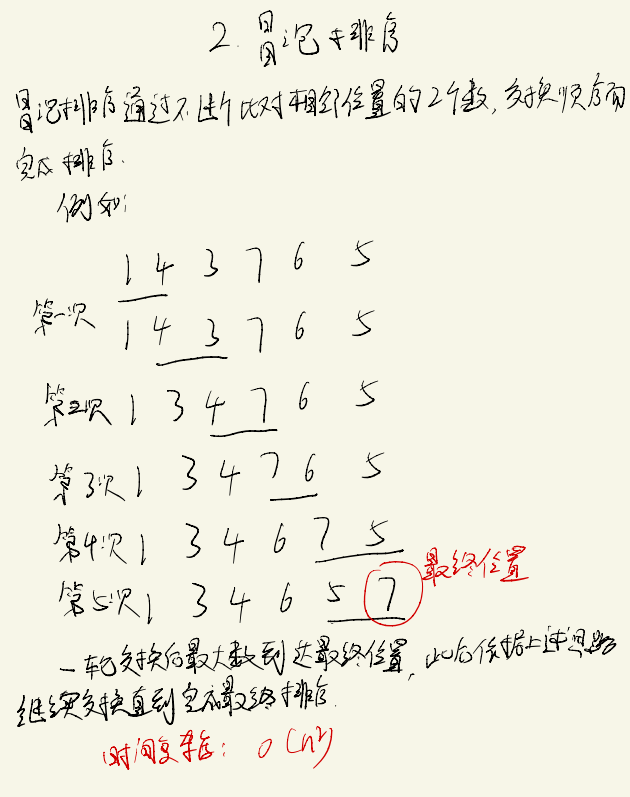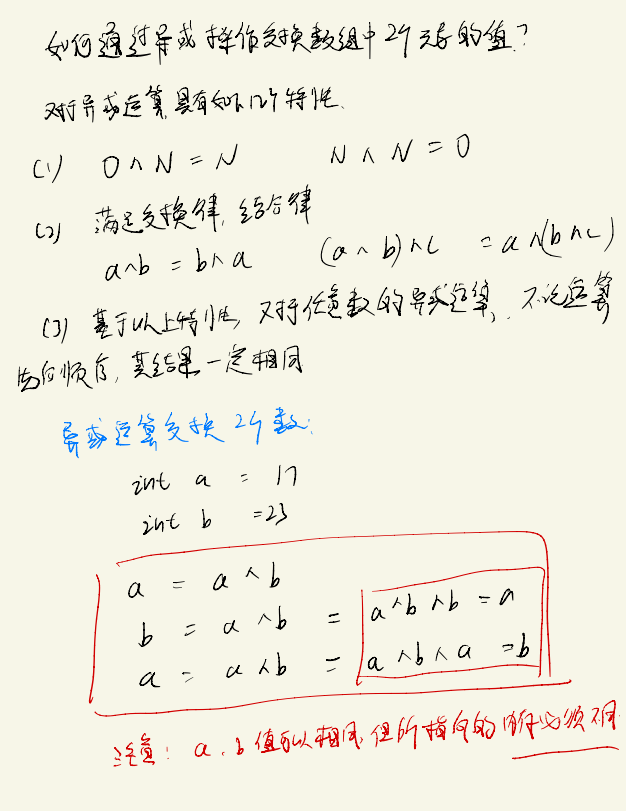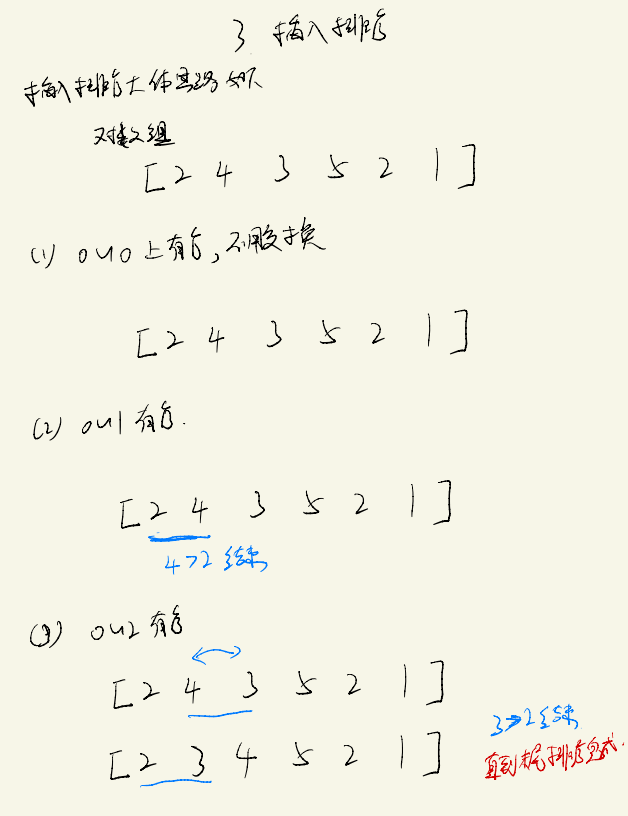前言
BoomLeetCode系列笔记为学习左神视频一周刷爆LeetCode所总结笔记,一共38p,计划每天刷1p,笔记更新进度会比较慢
瑞思拜左神~
文章时间复杂度均按最坏情况下计算
时间复杂度
这部分对于有编程基础的来说不是问题,大体上快速过一遍,先以选择排序中的计算方式给出时间复杂度概念
全部笔记已上传github:


简单排序算法
关于排序算法,另一篇文章请教我学数据结构(一)排序有介绍过,温故知新,看完左神视频后又有了一些新的理解,所以选择再完整记录一次
选择排序
时间复杂度的介绍中大体讲解了选择排序流程,即对于长度为N的数组。从数组下标0开始,寻找当前数组中0-N减1的最小数,放在数组下标0的位置,继续从下标1开始,寻找数组1-N减1的最小数,放在数组下标1的位置。即每一轮查找都有一个数放入最终所在位置。
基于以上思路,编码实现选择排序算法
1
2
3
4
5
6
7
8
9
10
11
12
13
14
15
16
17
18
19
20
21
22
23
24
25
26
27
28
29
30
31
32
33
34
35
36
37
38
39
40
41
42
43
44
45
46
47
48
49
| package p1.sort;
import java.util.Scanner;
public class Code01_SelectionSort {
public static void main(String[] args) {
Scanner sc = new Scanner(System.in);
System.out.println("请输入排序数字个数==========>");
int n = sc.nextInt();
int[] nums = new int[n];
System.out.println("请输入数据============>");
for (int i = 0; i < n; i++) {
nums[i]= sc.nextInt();
}
selectionSort(nums);
for (int num : nums) {
System.out.print(num + " ");
}
}
public static void selectionSort(int[] nums){
if(nums == null || nums.length < 2){
return;
}
for(int i = 0; i < nums.length - 1; i++){
int minIndex = i;
for(int j = i + 1; j < nums.length; j++){
minIndex = nums[j] < nums[minIndex] ? j : minIndex;
}
if(minIndex != i){
swap(nums, i, minIndex);
}
}
}
public static void swap(int[] nums, int i, int j){
int temp = nums[i];
nums[i] = nums[j];
nums[j] = temp;
}
}
|
时间复杂度
额外空间复杂度O(1)
冒泡排序
冒泡排序大体思路如下:

实现代码:
1
2
3
4
5
6
7
8
9
10
11
12
13
14
15
16
17
18
19
20
21
22
23
24
25
26
27
28
29
30
31
32
33
34
35
36
37
38
39
40
41
42
43
44
45
46
47
48
49
50
51
| package p1.sort;
import java.util.Scanner;
public class Code02_BubbleSort {
public static void main(String[] args) {
Scanner sc = new Scanner(System.in);
System.out.println("请输入排序数字个数==========>");
int n = sc.nextInt();
int[] nums = new int[n];
System.out.println("请输入数据============>");
for (int i = 0; i < n; i++) {
nums[i]= sc.nextInt();
}
bubbleSort(nums);
for (int num : nums) {
System.out.print(num + " ");
}
}
public static void bubbleSort(int[] nums){
if(nums == null || nums.length < 2){
return;
}
for(int i = nums.length - 1; i>0; i--){
for(int j = 0; j < i; j++){
if(nums[j] > nums[j+1]){
swap(nums, j);
}
}
}
}
public static void swap(int[] nums, int i){
nums[i] = nums[i] ^ nums[i + 1];
nums[i + 1] = nums[i + 1] ^ nums[i];
nums[i] = nums[i] ^ nums[i + 1];
}
}
|
时间复杂度
额外空间复杂度O(1)
其中对于异或运算实现数组元素交换,其原理为:


插入排序
插入排序思路如↓

实现代码:
1
2
3
4
5
6
7
8
9
10
11
12
13
14
15
16
17
18
19
20
21
22
23
24
25
26
27
28
29
30
31
32
33
34
35
36
37
38
39
40
41
| package p1.sort;
import java.util.Scanner;
public class Code03_InsertionSort {
public static void main(String[] args) {
Scanner sc = new Scanner(System.in);
System.out.println("请输入排序数字个数==========>");
int n = sc.nextInt();
int[] nums = new int[n];
System.out.println("请输入数据============>");
for (int i = 0; i < n; i++) {
nums[i]= sc.nextInt();
}
insertionSort(nums);
for (int num : nums) {
System.out.print(num + " ");
}
}
private static void insertionSort(int[] nums) {
if(nums == null || nums.length < 2){
return;
}
for (int i = 1; i < nums.length; i++) {
for(int j = i; j > 0; j--){
if(nums[j-1] < nums[j]){
break;
}
swap(nums, j);
}
}
}
private static void swap(int[] nums, int j) {
int temp = nums[j];
nums[j] = nums[j - 1];
nums[j - 1] = temp;
}
}
|
时间复杂度
额外空间复杂度O(1)
总结
本部分内容回顾了时间复杂度的计算方法,以及一些简单排序算法。复现过程中没有完全copy左神代码,根据自己的理解做了一些调整,没有通过对比器进行测试,如有错误,请指正。







